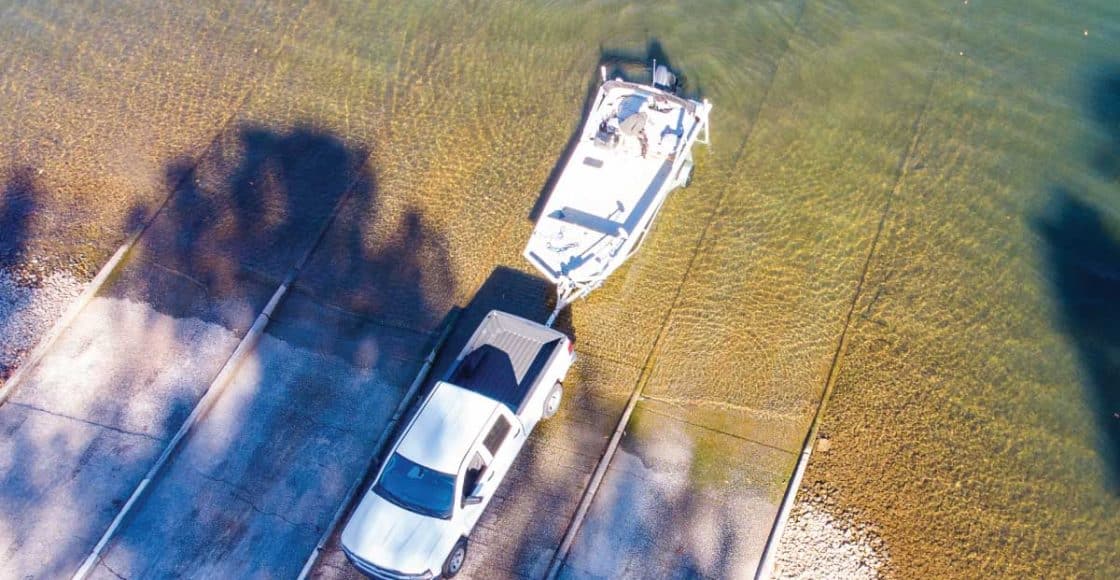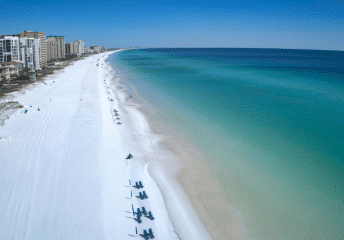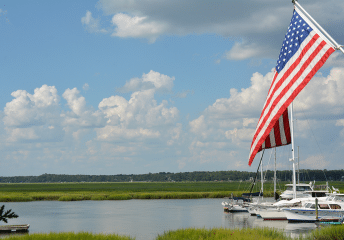How to Load a Boat on a Trailer (Retrieving Your Boat)
Last Updated on August 18, 2022 by Boatsetter Team
You and your crew had a day of fun and adventure on the water, you’re nearing the dock, and it’s time to load your boat back onto its trailer. Also known as “retrieving the boat” in nautical jargon, loading a boat on its trailer can be smooth and easy.
Here are 10 basic steps for loading a boat on a trailer:
- Drop the tow vehicle driver and passengers off at the dock.
- Ensure you’re out of the way of the launch area while you wait for your tow—if available, park at a nearby courtesy dock.
- The trailer should be backed down the launch ramp until its wheels or fenders are submerged to a similar water level as when you launched your boat.
- Be mindful of wind and current as you position your boat to load on the trailer.
- Use just enough power to control the boat. Slow is pro, and you’ll have more time to react.
- Aim the bow of the boat to the trailer winch stop.
- If the ramp is shallow, trim your outboard or sterndrive up so the prop (propeller) doesn’t hit the bottom.
- If your trailer is positioned at the correct depth, your boat should glide onto the trailer—use a little throttle to push the boat up further if needed.
- The tow vehicle driver should put the vehicle in park using the parking brake, and get out to secure the trailer winch and the safety chain.
- Once you pull out of the ramp, use a staging area off of the water to unload your gear, attach the transom straps and trailer lights, and prepare to hit the road.
Be sure to consult our other launching and towing guides to ensure you’re best equipped for your experience heading to and from the launch ramp:
Now, let’s walk through some of these steps in a little more detail…
Want help paying off your boat? List it with us
Dropping off your driver and passengers
Approach the dock to drop the vehicle driver and passengers off. If there’s a courtesy dock or dock away from the launch area, it’s okay to tie up while you wait for the trailer. If not, move the boat away from the ramp area and wait for the trailer to be backed down.
Backing up the boat trailer down the ramp
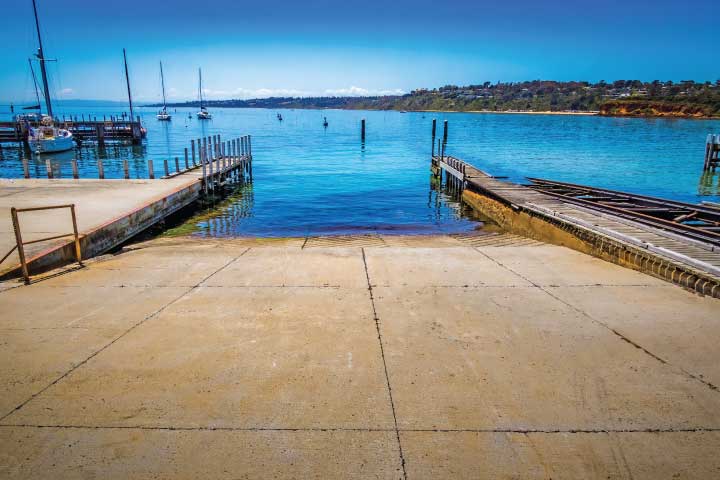
The driver who gets the tow vehicle should get in line – if there is a line – to take a turn in backing down the ramp to retrieve the boat.
If you and your crew remembered to observe the water level relative to your trailer wheels or fenders when you launched, back the trailer in to that same depth.
The driver can now put the vehicle in park and set the parking brake, and get out to help load the boat.
Loading and positioning your boat back on its trailer
Simultaneously, the boat driver should pay attention and be in position to approach the ramp when the trailer is in the water.
Once you’re ready to load, you’ll want to be mindful of wind and current that could push you off course as you approach the trailer, and plan ahead by starting a little upwind, for example.
- Use just enough power to control the boat. A slower speed gives you more time to react and keep the boat on course.
- Aim the bow at the trailer winch stop. Most boat trailers will self-align as the boat glides onto the trailer.
- If the ramp is shallow you may need to trim your outboard motor or sterndrive up a bit so the prop doesn’t hit bottom.
- If you have your trailer at the correct depth, the boat should glide onto the trailer right to the winch stop, or close to it.
- Use a little throttle to push the boat up to the stop, or have your helper attach the winch strap to the bow eye and use the winch to pull the boat up the watercraft stop.
If the boat ends up a little crooked on the trailer, back down the ramp just a little to allow the boat to float and center itself.
Pro Tip: Do not “power load” your boat—using excessive engine thrust to drive the boat up onto the trailer will damage the ramp by washing away the lake bottom. Better to back your trailer in a little deeper in the water.
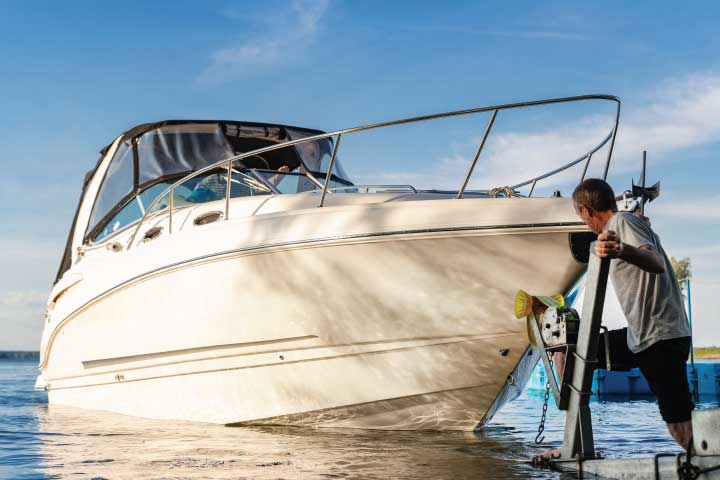
Preparing to hit the road
Once the boat is positioned properly on the trailer, secure the winch at the bow and secure the safety chain. The boat driver can stay in the boat while the vehicle driver pulls up the ramp.
Drive to the staging area, or away from traffic, to unload coolers and gear from the boat, secure transom straps and trailer lights, and get ready to hit the road.
Clean, drain, and dry to remove any aquatic invasive species
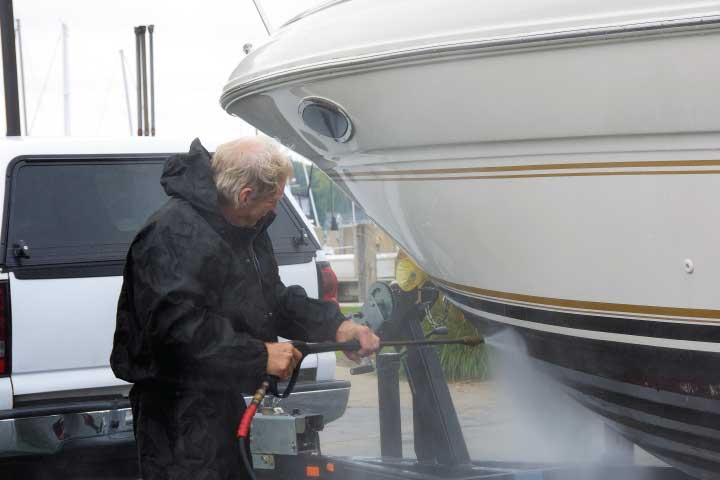
Before driving away, it’s important—and in most places, the law—to remove weeds from the boat and trailer and to drain the bilge, live wells, and bait wells before driving away from the ramp. This prevents the spread of invasive species like milfoil and zebra mussels. There may be signage at the ramp with guidance for this procedure or check with your state DNR for local regulations.
Boatsetter is a unique boat-sharing platform that gives everyone — whether you own a boat or you’re renting — the chance to experience life on the water. You can list a boat, book a boat, or make money as a captain.
Start offsetting the costs of boat ownership as soon as you list with Boatsetter!

Charles Plueddeman is a self-employed writer and photographer based in Wisconsin. A staff editor and contributor to Boating Magazine since 1986, he is the author of its “Off My Dock” column. In the marine realm he specializes in engine technology and trailerable boats. His editorial work has appeared in many national publications, including Popular Mechanics, Men’s Journal, Playboy, Popular Science, Cycle World, and Harley-Davidson Enthuisast.
